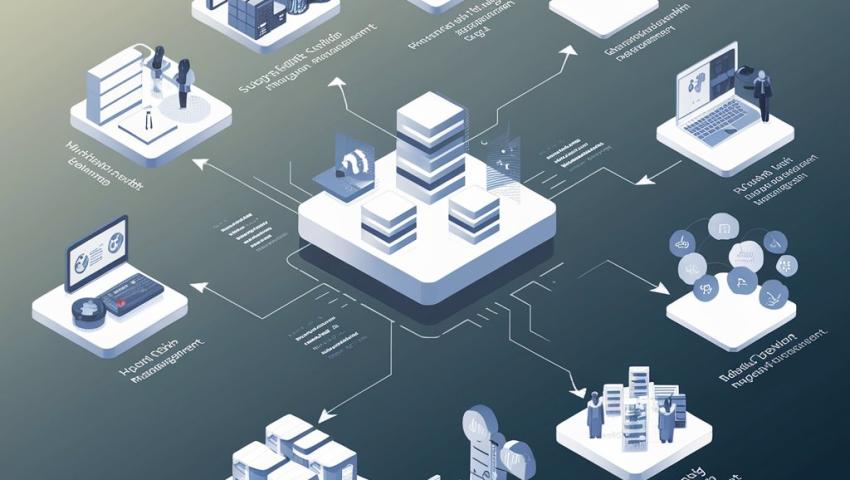
The Advantages of Using Software in Educational Facilities
Educational software has dramatically transformed how students engage with the learning material. Interactive educational tools, such as multimedia presentations, simulations, and gamified learning platforms, make lessons more engaging and cater to diverse learning styles.
In today’s digital era, software has become an integral part of various sectors, with education being no exception. The integration of software into educational facilities has revolutionized traditional learning methods, improved administrative efficiency, and enhanced the overall learning experience for both students and educators. Here’s a deep dive into the advantages of using software in education, supported by relevant case scenarios.
1. Enhanced Learning Experience and Student Engagement
Educational software has dramatically transformed how students engage with the learning material. Interactive educational tools, such as multimedia presentations, simulations, and gamified learning platforms, make lessons more engaging and cater to diverse learning styles.
Case Scenario: Virtual Science Labs
Imagine a high school where students typically perform chemistry experiments in a physical lab. Due to safety concerns and limited resources, the experiments are often restricted. However, with virtual lab software, students can safely conduct complex experiments in a simulated environment. This not only enhances their understanding of the subject but also enables them to experiment without the fear of accidents. Students can repeat experiments as many times as needed, which helps in reinforcing their learning.
Benefits:
- Increases student engagement through interactive content.
- Caters to visual, auditory, and kinesthetic learners.
- Provides a safe and controlled environment for experimentation.
2. Personalized Learning and Adaptive Education
One of the most significant advantages of educational software is its ability to offer personalized learning experiences. Adaptive learning platforms use algorithms to assess a student's performance and adjust the content accordingly, ensuring that each student learns at their own pace.
Case Scenario: Adaptive Learning Platforms in a Math Class
In a traditional math class, a teacher may struggle to address the needs of all students due to varying skill levels. With an adaptive learning platform like Khan Academy, students work through exercises tailored to their skill level. The software identifies areas where a student struggles and provides additional resources or simpler problems to build their understanding. For advanced learners, it offers more challenging problems to keep them engaged.
Benefits:
- Supports differentiated instruction.
- Helps students master concepts before moving on.
- Reduces the achievement gap by catering to individual learning needs.
3. Efficient Administration and Resource Management
Software solutions designed for educational administration can streamline tasks such as attendance tracking, grade management, scheduling, and resource allocation. This automation reduces the workload on administrative staff, allowing them to focus on more strategic tasks.
Case Scenario: School Management Software in Action
Consider a large university managing thousands of students, staff, and courses. Manual scheduling and grade entry are time-consuming and prone to errors. Implementing school management software like PowerSchool or Blackboard automates these processes. Teachers can enter grades directly into the system, which students can access in real-time. The software also automatically generates schedules based on course availability and student requirements, reducing conflicts and manual errors.
Benefits:
- Increases administrative efficiency.
- Reduces paperwork and manual errors.
- Provides real-time access to information for students, teachers, and parents.
4. Improved Communication and Collaboration
Software platforms facilitate better communication and collaboration between students, teachers, and parents. Tools like learning management systems (LMS), email, messaging apps, and video conferencing software bridge the communication gap, enabling a more connected learning environment.
Case Scenario: Parent-Teacher Communication via LMS
In many schools, parent-teacher meetings are held only a few times a year, which may not be enough to keep parents informed about their child’s progress. Using an LMS like Google Classroom or Moodle, parents can regularly check their child’s assignments, grades, and feedback from teachers. If a student is falling behind, the teacher can immediately communicate this to the parents, enabling timely intervention.
Benefits:
- Enhances transparency and accountability.
- Fosters a stronger partnership between teachers and parents.
- Encourages continuous feedback and communication.
5. Accessibility and Inclusivity
Educational software has made learning more accessible, particularly for students with disabilities. Assistive technologies, such as screen readers, speech-to-text software, and subtitles, enable students with visual, auditory, or learning disabilities to participate fully in their education.
Case Scenario: Assistive Technologies for Inclusive Education
A university uses text-to-speech software for visually impaired students. This software converts textbooks and other learning materials into audio format, allowing visually impaired students to listen to lectures and read assignments. Additionally, the use of closed captioning in video lectures aids students with hearing impairments, ensuring they do not miss out on important information.
Benefits:
- Promotes inclusivity and equal access to education.
- Accommodates students with diverse needs.
- Complies with legal requirements for accessibility in education.
6. Data-Driven Decision Making
Educational software collects vast amounts of data on student performance, attendance, and engagement. This data can be analyzed to identify trends, predict outcomes, and make informed decisions to improve teaching strategies and student support.
Case Scenario: Using Analytics for Student Performance
A high school uses data analytics software to track student performance in various subjects. The software identifies students who are consistently performing below average. The school uses this data to provide targeted interventions, such as tutoring or additional resources, to help struggling students. Over time, the data reveals improvements in student performance, validating the effectiveness of the intervention strategies.
Benefits:
- Facilitates evidence-based decision-making.
- Helps identify areas for improvement in teaching and curriculum.
- Enhances student support through targeted interventions.
7. Cost-Effectiveness and Resource Optimization
Implementing software solutions can result in long-term cost savings for educational facilities. Digital textbooks, online assignments, and virtual classes reduce the need for physical resources, such as paper and printing. Moreover, software solutions often automate tasks that would otherwise require additional personnel.
Case Scenario: Digital Libraries in Schools
Traditionally, schools invest heavily in physical textbooks and library books, which need regular updating. A school decides to implement a digital library software, providing students access to a wide range of e-books and digital resources. This reduces the need for physical books, minimizes storage requirements, and ensures students have access to the latest materials at a fraction of the cost.
Benefits:
- Reduces costs associated with printing and physical resources.
- Provides up-to-date learning materials.
- Optimizes resource allocation and reduces waste.
8. Flexibility and Remote Learning Opportunities
The COVID-19 pandemic highlighted the importance of flexible learning options. Software solutions like Zoom, Microsoft Teams, and various LMS platforms enabled schools and universities to transition to online learning swiftly. Even beyond the pandemic, these tools continue to offer flexible learning options, such as hybrid and blended learning models.
Case Scenario: Remote Learning During a Pandemic
During the pandemic, many schools were forced to close temporarily. An elementary school quickly adopted Microsoft Teams to conduct virtual classes. Teachers shared lesson plans, assignments, and educational videos through the platform. Despite the physical distance, students could continue their education seamlessly from home, interact with peers, and receive timely feedback from teachers.
Benefits:
- Supports continuous learning regardless of physical location.
- Provides a backup option in case of disruptions (e.g., weather, health issues).
- Enables lifelong learning through access to online courses and resources.
9. Standardization and Curriculum Consistency
Software solutions help standardize curriculum delivery across different classrooms and educational institutions. Learning management systems ensure that every student has access to the same content, regardless of the teacher or location.
Case Scenario: Standardized Course Content with LMS
A national university with multiple campuses uses Moodle to deliver a standardized curriculum for its introductory computer science course. This ensures that students in different campuses receive the same quality of education and learning materials, with consistent assessments and grading rubrics.
Benefits:
- Ensures uniform quality of education.
- Facilitates curriculum updates and consistency.
- Enables easier accreditation and compliance with educational standards.
10. Skill Development and Preparation for the Future
Using software in education not only enhances learning but also prepares students for the digital world. By interacting with various software tools, students develop essential skills like digital literacy, problem-solving, and critical thinking, which are vital for future careers.
Case Scenario: Coding Software in High Schools
A high school introduces coding software like Scratch and Python IDEs as part of its curriculum. Students learn programming basics, develop problem-solving skills, and create their projects. This hands-on experience with software tools prepares them for higher education and careers in technology.
Benefits:
- Equips students with essential digital skills.
- Enhances problem-solving and critical thinking abilities.
- Prepares students for the demands of a digital workforce.
Conclusion
Incorporating software in educational facilities offers numerous advantages, from enhancing learning experiences to streamlining administrative processes. By leveraging these tools, educational institutions can provide a more engaging, inclusive, and effective learning environment. The integration of software in education is not just a trend but a necessity in preparing students for a rapidly evolving world.
Timo Kavuma
Leave a comment
Your email address will not be published. Required fields are marked *


